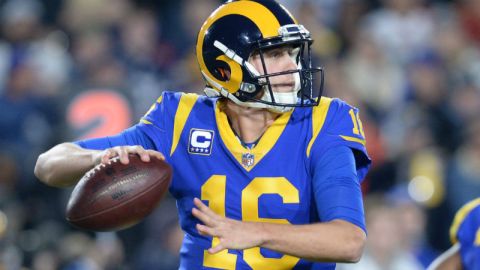The Big East is the only major conference in college football where almost any team can win the title this season. Is this a sign of parity or mediocrity?
The only one the Big East lacks is a heavyweight. Regardless of what you may have read or heard, the Big East Conference is full of good teams. What they don’t have is a national title contender. Imagine the Pac-10 without USC or the Big Ten without Ohio State. That’s the Big East.
Don’t be fooled. If you put Cincinnati, West Virginia or Rutgers in the Pac-10, those schools would do just as well as Oregon, Oregon State and California. Some years, they would be good, and some years, they would have trouble. But overall, they would compete.
The Big East does not have a single team in the Top 25 of either the AP or coaches’ preseason polls. This does not mean that the conference is terrible. It is just a sign of the lack of respect people give to the Big East.
Last year, the AP preseason top 10 included three teams who did not finish the season ranked. In fact, teams ranked 7-10 in the preseason AP poll finished the year with a combined record of 29-22. At this point in the season, it’s a name game, nothing more.
Proof of the Big East’s ability is in the NFL. The Big East had nine players selected in the first two rounds of the 2009 NFL draft. That is on par with all five of the other major conferences. (The Pac-10 led the way with 11 players drafted in the first two rounds.) The difference is that the Big East has only eight teams, which is several less then all of these others conferences. The Big 12 and SEC each have 12 teams.
This year, the biggest question surrounding the Big East is whether a team can go on a run. Can Cincinnati, UConn, Pittsburgh, Rutgers, South Florida or West Virginia put it all together and go 11-1 or 12-0? This is really the only chance that the conference has of gaining respect. One great team would do more to sway the opinion of the general public than three or four good teams.
Now, on to the individual team previews.
Cincinnati
2008 record: 11-3 (6-1), Big East champion
The Bearcats are back to prove that they are still the beasts of the Big East. Senior quarterback Tony Pike is one of seven returning offensive starters. Between Pike and star wide receiver Mardy Gilyard, the offense looks poised to be the best in the conference.
The questions arise when it comes to the defense. Cincinnati’s recent success has been due, in large part, to their play on the defensive side of the ball. This year, it is returning only one starter. One. With the loss of so many starters — and the overall athleticism of the defense — head coach Brian Kelly thought it was a perfect time to switch from a 4-3 to a 3-4 defense. This change should enable them to put more of their best athletes onto the field.
Best case: The offense lights it up, scoring 30-plus points per game. Meanwhile, the transition to the 3-4 defense is seamless, and the defense’s speed constantly creates turnovers. Cincinnati goes 11-1 and repeats as Big East champs.
Worst case: As in past years, Pike has trouble staying healthy. After Pike goes down with an injury, the offense is relatively average. At the same time, the inexperienced defense has some growing pains in switching to the 3-4 approach. The team is still good, but finishes a disappointing 7-5.
Connecticut
2008 record: 8-5 (3-4)
This season, UConn is making a huge switch in its offensive philosophy. Former offensive coordinator Rob Ambrose is now the head coach at Towson, and he's taken his conservative running attack with him. UConn head coach Randy Edsall has decided to try a new approach, bringing in Joe Moorehead to run the offense. Moorehead comes from Akron and brings a no-huddle spread offense. Junior quarterback Zach Frazer, a highly recruited high schooler who transferred from Notre Dame, has won the starting job. One of the biggest questions in the Big East this season surrounds how well UConn will adapt to the spread offense.
On defense, UConn will once again have a lot of talented players. Defense is Edsall’s pride. As a result, the unit is always well-coached and disciplined. The only problem is that it tends to lack overall speed. This is an issue when the Huskies face elite competition.
Best case: Frazor plays up to his potential, excelling in the no-huddle offense. Even with the loss of running back Donald Brown to the NFL, the running game performs well enough to keep opponents honest. The defense remains healthy. UConn gets a few breaks and goes 10-2, winning the Big East.
Worst case: The switch to the no-huddle offense is terrible (see: Nebraska, 2004). The defense is decent, but not good enough to make up for the terrible offense. The team loses several close games before getting blown out by an improved Notre Dame squad. The Huskies finish the season a disappointing 5-7. After that, Edsall decides to ditch the no-huddle offense.
Louisville
2008 record: 5-7 (1-6)
Junior Justin Burke has been named the starting quarterback for an offense that returns nine starters. Last year, the offense scored enough points, but it also turned the ball over way too much. Burke and the offense must protect the ball because the defense is poor.
Last year, the Cardinals' defense was bad, especially when it came to defending the pass. With two new starting corners, Louisville may once again have trouble keeping opposing offenses out of the end zone.
Best case: The talent and experience on the offensive side of the ball comes together, and the Cardinals score a ton of points. The defense is able to holds teams to field goals, and Louisville finishes a better-than-expected 7-5.
Worst case: The Cardinals continue to turn the ball over and the pass defense gets even worse. Louisville goes 3-9, and coach Steve Kragthorpe remains on the hot seat.
Pittsburgh
2008 record: 9-4 (5-2)
Right now, Pittsburgh’s 2009 offense has more questions than answers. By all accounts, fifth-year senior quarterback Bill Stull was given the starting job more than he actually earned it. Last season, Stull was below average, and that is being nice. He completed 57 percent of his passes — terrible for a team with a good running game. Will Stull improve this season? The Panthers also lost a great running back in LeSean McCoy, who left school early to enter the NFL. Will anyone be able to fill his shoes?
It’s not all doom and gloom for Pittsburgh. The Panthers should once again feature a great defense, probably the best in the Big East. Unlike most teams whose defensive strength is their linebackers, the best defensive units for Pittsburgh are actually their defensive line and secondary.
Best case: Stull steps up, and his steady play leads the offense to over 20 points per game. The defense is terrific, smothering opponents with its great D-line. The Panthers go 10-2 and win the Big East.
Worst case: After the first five (very soft) games of the season, the Panthers fall apart. The offense is a complete mess, as the quarterback and offensive line simply implode. Unable to score enough points, the Panthers finish 6-6, closing out the season with three terrible loses.
Rutgers
2008 record: 8-5 (5-2)
The Scarlet Knights open the season at home, against Cincinnati, in a game that could set the tone for the rest of their season. In order for Rutgers to have a chance of winning the Big East this season, the defense needs to be very good. This certainly could be the case, as Rutgers has shown flashes of brilliance on defense. However, in past years, the defense has not been able to put together an entire season of good play.
The offense has some major questions, as it must replace both parts of its top playmaking tandem. Quarterback Mike Teel graduated, and wide receiver Kenny Brit left for the NFL. The Knights always seemed to struggle when Teel was off the field. As of right now, head coach Greg Schiano is undecided, or at least not telling, who will get the opening day start at quarterback. Can the as-of-yet unnamed signal-caller step up to lead the Knights?
Best case: Rutgers beats Cincinnati in the opener, as the Bearcats’ defense is slow to adjust to the change from 4-3 to 3-4. The Scarlet Knights' offense comes together, and the defense proves to be the best in the conference. Rutgers takes advantage of playing Cincinnati, Pittsburgh and South Florida at home, and ends up 11-1 and Big East champs.
Worst case: The offense never gets going, and the Knights' dream season evaporates quickly. Despite a soft nonconference schedule, they finish a disappointing 6-6.
South Florida
2008 record: 8-5 (2-5)
Senior quarterback Matt Grothe returns to lead the offense. (Yes, it seems like he has been there forever, but it’s only because this is his fourth straight year as a starter.) The problem with the offense is that everything is on Grothe’s shoulders. For the past three seasons, he has led the team in both rushing and passing yards each season. Yes, he is a great athlete. However, it is difficult to consistently win if any one player is expected to do it all. Grothe also throws far too many interceptions. He must cut down on the number of turnovers for South Florida to be successful.
South Florida benefits from its location, as the team is able to recruit superior athletes. This is most evident on the defensive side of the ball. The unit is led by defensive end George Selvie, an ultraquick sack artist. If Selvie can remain healthy, this is a defense that can put pressure on any offense. However, the Bulls have also shown a tendency to be undisciplined at times, counting on their team speed to bail them out. This can lead to problems.
Best case: Matt Grothe succeeds at increasing his passing efficiency while reducing his interception total. The offense spreads the ball around to better utilize its myriad of playmakers, posting over 20 points per game. The defense plays great and cuts down on its mental lapses. The Bulls go 11-1, winning the Big East.
Worst case: Basically, it’s a repeat of last year. The offense commits too many turnovers, and the defense is too undisciplined. The team finishes 6-6, as this current group of players is unable to reach its maximum potential.
Syracuse
2008 record: 3-9 (1-6)
Life has been horrible for Syracuse football fans recently. The Orange have won only three Big East games total in the past four years (one last season, one in 2007, one in 2006 and none in 2005). That is the definition of terrible.
However, that was then, and this is now. First-year coach Doug Marrone takes over a program that has hit rock bottom. He has named ex-Duke point guard and former stud high school quarterback Greg Paulus as the starting quarterback. After four years away from football, how will Paulus play? If he plays well enough to bring excitement back to the Carrier Dome, then he has done his job.
It’s tough to figure out what has been worse in recent years: Syracuse’s offense or defense. Last year, the defense was one of the worst in the country. Teams were able to do whatever they wanted against the Orange. From a personnel standpoint, the defense doesn’t look any better this year. Hopefully, a coaching change will improve this unit. It can’t get any worse.
Best case: Paulus remembers how to throw a spiral and read a defense. Wide receiver Mike Williams, coming off a yearlong academic suspension (he was actually kicked out of the school), returns even better than before. The duo becomes a great combo. The defense improves from “hide the women and children”-awful to Old School “earmuffs”-bad. The Orange finish a respectable 6-6 and even go to a bowl game.
Worst case: This section should be titled “more of the same”. The defense is terrible, and the Paulus experiment is a total failure. Syracuse once again finishes in the Big East basement. Hey, there’s always hoops.
West Virginia
2008 record: 9-4 (5-2)
Exit quarterback Pat White. Enter Jarrett Brown. Brown has a big arm (he actually looks more like a linebacker than a quarterback) and can make all the throws. However, questions remain about his ability to throw the ball effectively. He has had trouble with this in recent years, whenever he filled in for an injured White. As always, the Mountaineers sport some of the quickest players in the conference — none quicker than running back Noel Devine. Last year, West Virginia switched away from its spread offense to a more standard style. The results were not great. Will Brown be able to revive the offense?
Similar to its offense, West Virginia’s defense is all based on speed. The Mountaineers run an unusual 3-3-5 defense. Against big offensive lines, the Mountaineers are susceptible to the run. However, they tend to tighten up on their side of the field. With their team speed, they also create a lot of turnovers.
Best case: Brown steps in and fills White’s shoes admirably. The defense continues to create turnovers, and the team goes on a run, finishing 10-2 and winning the Big East.
Worst case: Brown struggles mightily as the full-time quarterback, and the inexperienced offensive line is not able to open enough holes for the running game. The defense does more breaking than bending, and the Mountaineers finish a disappointing 5-7.



